Using U-P-S to Collaborate and Solve Problems Transcript
Instructor: TeRaze Mickle
+++ 00:00:07 +++
Card: Strategies: Assessment with the UPS.
TeRaze Mickle: Today we are going to use the UPS shake process again.
Lower Third: TeRaze Mickle
9th-10 Grade Geometry
Cedar Hill Collegiate High School, Cedar Hill, Texas
TeRaze Mickle: The UPS process is a strategy that I use. The U stands for understanding the problem first.
Card: U = Understanding.
TeRaze Mickle: The P stands for planning out the steps that you're going to use to solve the problem.
Card: P = Planning.
TeRaze Mickle: And the S stands for the solve part of the problem.
Card: S = Solve.
TeRaze Mickle: Giving the reasoning why you're doing your steps.
Card: ? = Check
+++ 00:00:39 +++
TeRaze Mickle: And the check part checks for your reason to see if your answer's logical, your calculations are right.
TeRaze Mickle: The challenge is on. Let's see, can you use the thinking the process, embedded with all the other strategies, in order to solve the problem?
TeRaze Mickle: Doing the U process, I've noticed this: if a child can't articulate it in writing, they've probably got a reading comprehension issue.
+++ 00:00:58 +++
TeRaze Mickle: In this section of the planning, you're supposed to devise a plan in writing. I see the pictorial part, but where's the writing?
TeRaze Mickle: The two, if they can't plan it, they can draw it and they can see it, then they can write it out a little bit better, but that helps me with knowing my visual learners and things like that.
TeRaze Mickle: You're skipping all the steps in between. I'm going to need the work shown here. That came from the calculator, right?
Student: Mm-hmm.
TeRaze Mickle: So whatever tan was, put that there equal to x/100 and finish it out and then show me this part.
+++ 00:01:28 +++
TeRaze Mickle: The solve part, if they're just repeating some steps and don't know why, then that tells me I have to go back and explain why they did stuff. Go back over some more properties, some more rules, some more definitions, some theorems.
TeRaze Mickle: Surface area?
Student: Uh-huh.
TeRaze Mickle: Wait a minute.
Student: You would use volume.
Student: Volume? Okay.
TeRaze Mickle: Your volume is your inside. Your surface area is only the outside, so that would only the outside portion. So it has to be volume.
TeRaze Mickle: And of course, they find a way of checking it, that means they really, really understand it.
+++ 00:01:58 +++
TeRaze Mickle: All of you all trying to check you work good job! Go on with that, yeah, good.

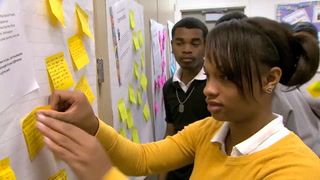
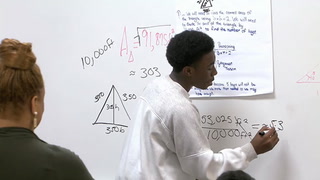

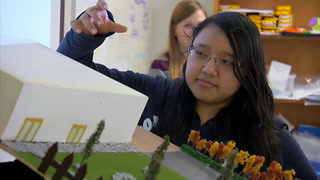
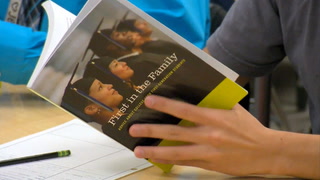
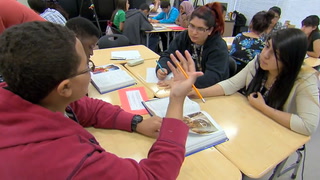








23 Comments
Janiece Wardlow Mar 29, 2018 5:46am
Rain Totten Mar 14, 2017 2:46pm
Victoria Silvers Jun 23, 2015 3:19pm
Marlo Leon Sep 7, 2014 12:47am
Lolita Sams Jul 27, 2014 11:00pm